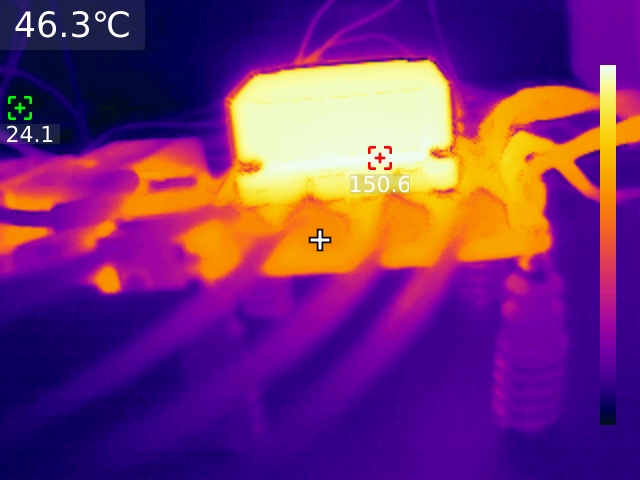Posted by Josh Elijah on 23rd Mar 2023
UbiSwitch Preliminary High Temperature Tests
UbiSwitch, our most powerful and rugged networking appliance yet
UbiSwitch is designed specifically for use in harsh environments, with specific tolerance to pressure, vibration, altitude, humidity and temperature. As of the time of writing the initial prototypes UbiSwitch have passed all functional tests, and thus MIL-STD-810G testing has been scheduled. However, prior to investing the time (and money) in this testing, it is possible to perform crude tests of UbiSwitch in the lab first to verify whether the board will pass MIL-STD-810G. Of all the variables to control in a lab setting, temperature is by far the most easy; specifically high temperature which can be achieve simply by way of a hot air gun. This blog post is a brief report on the initial findings of UbiSwitch when exposed to extreme high temperatures.
Test setup
Eight Raspberry Pis were connected to provide 1Gbps data rates on all 8 1Gbps ports on UbiSwitch.
10GBASE-T SFPs were inserted into two of the three SFP ports on UbiSwitch; these were then connected to two high performance computers to provide 10Gbps rates.
iPerf3 tests were initiated between each port pairs, and the data rates monitored for slow downs or dropouts.

A hot air gun was pointed directly at the heatsink and a thermal camera was used to monitor the heat on the top and below the heatsink.
Test results
UbiSwitch was exposed to 200°C from the hot air gun, achieving a maximum temperature of 159.6°C on the top of the heatsink and 150.6°C underneath the heatsink.


This condition was maintained for 20 minutes, and no slow downs or dropouts were observed on any of the ports.
Conclusion
The results observed are surprising, in that UbiSwitch seems to be capable of operating well above the maximum chip temperature of 125°C. It's worth mentioning that we cannot guarantee for sure that the actual silicon junction inside the chip is actually above 125°C, given that we are only observing the temperature of the heatsink. That said, given that this condition was maintained for 20 minutes, it's highly likely that the silicon junction was above 125°CC for a majority of that time.
These results are very promising and give us the confidence necessary for us to invest in MIL-STD-810G testing.

